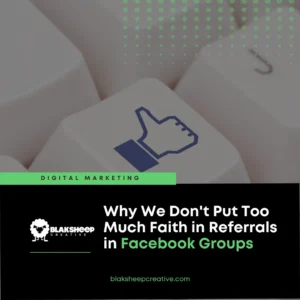There will probably be many long-term changes in consumer psychology and behavior that we’ll see as this COVID-19 outbreak crisis comes and goes.
In this article, we’re going to focus on three changes in people’s behavior on social media that we’ve already seen within the first couple of weeks.
Use these changes to adjust not only your company’s social media marketing but your digital marketing strategy as a whole.
A COVID Influencer Readjustment
The first change in social media that we’ve seen is a change in the way we influencers.
Before the onset of this global pandemic, our typical notion of an influencer consisted of people who travel and display lavish lifestyles.
But, because of changes in human values that have happened as a result of this crisis, these influencers no longer hold as much attention as they did before.
COVID-19 has created a restructuring in what we value in our influencers.
The new influencers will be focused on our basic needs.
They will give us takeout suggestions, they’ll teach us how to cook, they’ll teach us how to exercise at home and they’ll recommend ways to sew masks for first responders and hospital workers.
What’s interesting is that the majority of people won’t recognize that these new influencers are influencers.
This means that when we initially see these influencers talking about products we won’t even recognize that they’ve been paid to talk about those products.
This means that we’ll be more receptive to what they say and less likely to dismiss their content as an advertisement.
Rethinking Calls To Action
The second change in social media behavior to consider during this crisis is that, since people are staying at home, they will tend to have multiple devices in front of them at the same time.
People will be more likely to respond to a call to action on their phone by searching for a product on Google than they previously would.
Before the “shutdown,” we saw a lot of ads while searching our phone in public, and we didn’t have the time to click on a link to another website on our phone.
Now, we can simply search for the product on our other devices without losing track of where we are in the social media feed on our phones.
Ephemeral Content Is On The Rise
The third change in social media behavior that we’re seeing is a rise in ephemeral content.
Ephemeral content is rich media, primarily images and videos, that are only accessible for a brief period.
This is how Facebook and Instagram stories work.
Live streams are also a type of ephemeral content because you can only catch them live for a limited time.
People will always be attracted to ephemeral content because it creates a fear of missing out (FOMO).
We used to frequently experience FOMO through all the events we saw on social media that we were missing out on and by seeing our friends going out and doing a bunch of fun things.
We aren’t seeing these posts anymore, which opens up the opportunity to continue engaging our desire for FOMO online through ephemeral content.
Many companies like YouTube and Twitter are already looking at how they can add more ephemeral content to the mix (e.g. stories).
And brands can take advantage of this increased attention in ephemeral content by going on YouTube live or Facebook live and talking to and engaging their customers in real-time.
B2B companies can especially take advantage of this opportunity to talk to their clients live and address their concerns.
Since things are changing so quickly, live streaming is an important opportunity for take-out restaurants to update their customers on their hours, their products, and how they are careful in packaging our food during these difficult times.
Just because we are all practicing social distancing during the coronavirus crisis, and having to work from home, we don’t have to abandon our marketing efforts altogether. We just had to adapt and adjust them.
Do you need help adjusting your company’s social media and/or digital marketing strategies? Fill out the form below and let’s see where adjustments can be made to help your small business stay afloat during this crisis.
















































